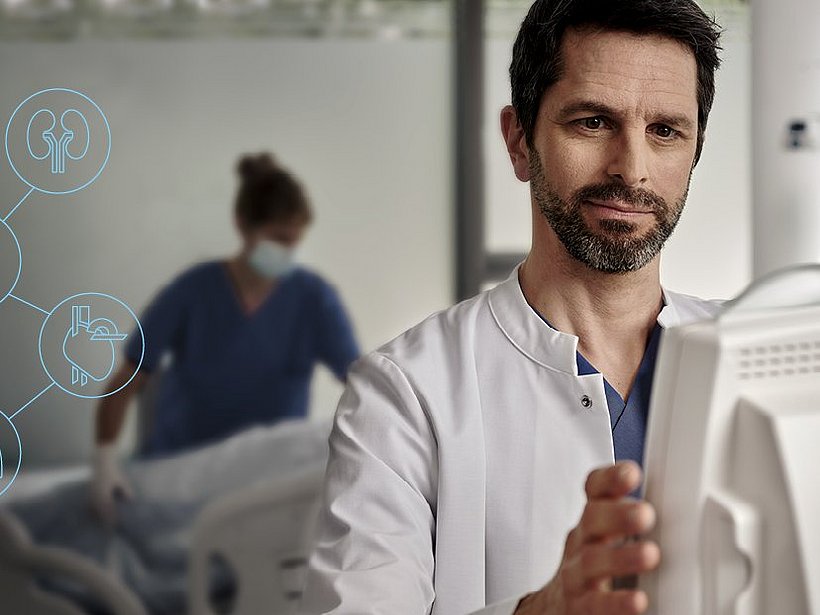Offering renal care and beyond.
Heart and lung support
Treating pulmonary and cardiac failure
Heart and lung support bundles our treatments for patients suffering from pulmonary and/or cardiac failure. Working from one single platform that combines both heart and lung support, we offer a variety of different treatment options. These are based on the principle of extracorporeal membrane oxygenation, or short ECMO.
ECMO is an established form of extracorporeal life support (ECLS). It provides cardiopulmonary support in critically ill patients when conventional measures fail (e.g. mechanical ventilation, inotropes or other cardioactive drugs, etc.).1
Put simply, ECMO therapy bypasses the function of the lungs. The patient's blood is withdrawn from the body via cannulas and regulated with the support of a pump. Outside the body the blood is freed from carbon dioxide (CO2) and enriched with oxygen (O2) in a gas exchanger – a so-called artificial lung. The blood then re-enters the body through a second cannula.2
Veno-venous ECMO (VV ECMO)
- Supports mainly the lungs (respiratory functions)
- Drains blood from a major vein and returns it to a major vein
- Adequate circulation is provided by the native cardiac output
VA ECMO with synchronized cardiac support
An innovative VA ECMO treatment is our synchronized cardiac support (SCS). The vision of SCS is to bridge the gap between physiology and mechanical circulatory support by adapting to the patient’s heart rhythm via an ECG-triggered pulsatile flow.*
*Clinical trials to generate evidence for synchronized cardiac support treatment are scheduled. Data from preclinical studies is available.
Related content
1 Brogan TV et al. Extracorporeal Life Support: The ELSO Red Book (5th edition) 2017
2 Sangalli F ECMO-Extracorporeal Life Support in Adults 2014; 19-36
3 Redwan B et al. Interact Cardiovasc Thorac Surg 2015; 21:766-772
4 Braune S et al. Intensive Care Med 2016; 42(9):1437-1444
5 Combes A et al. Intensive Care Med 2022; doi: 10.1007/s00134-022-06796-w







